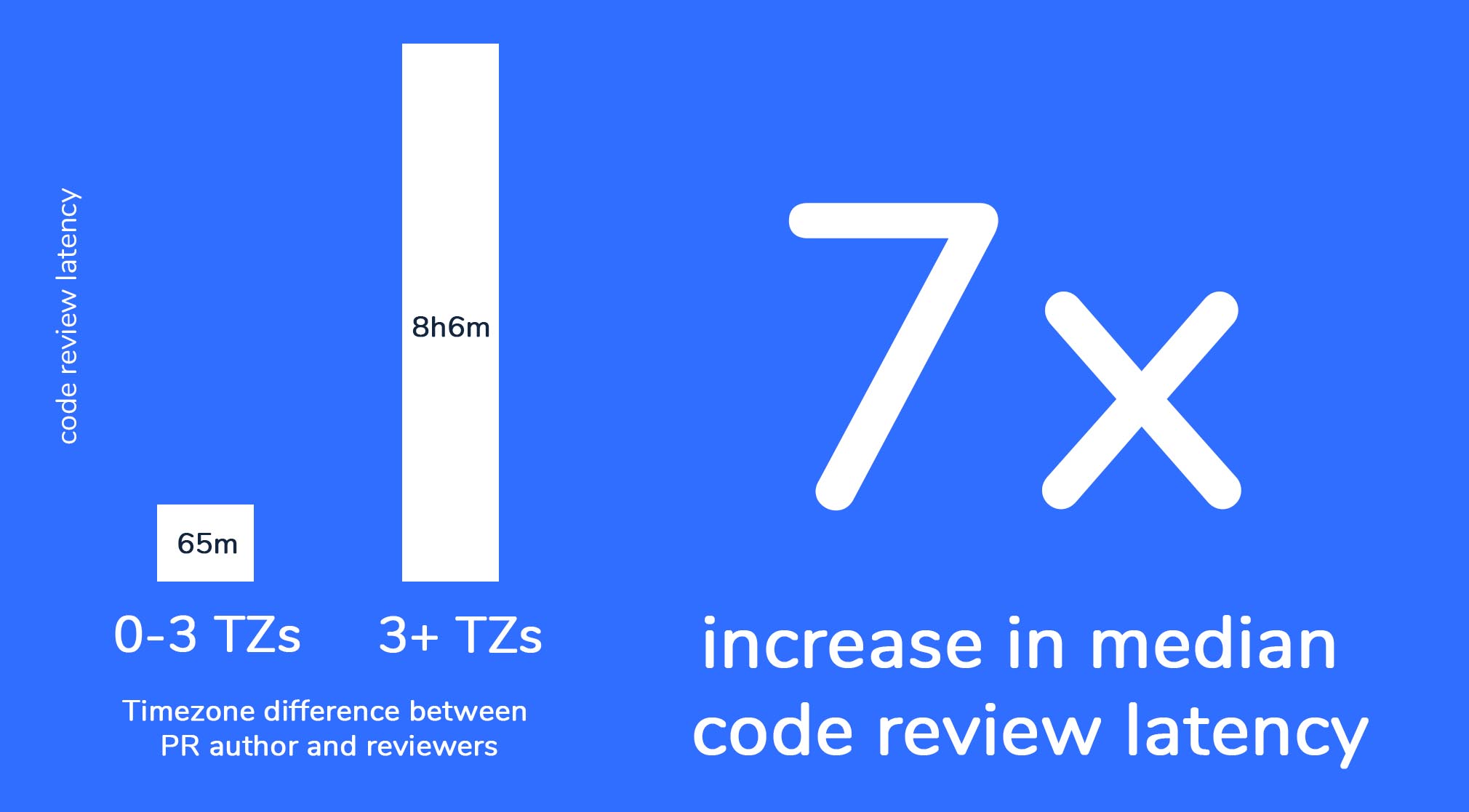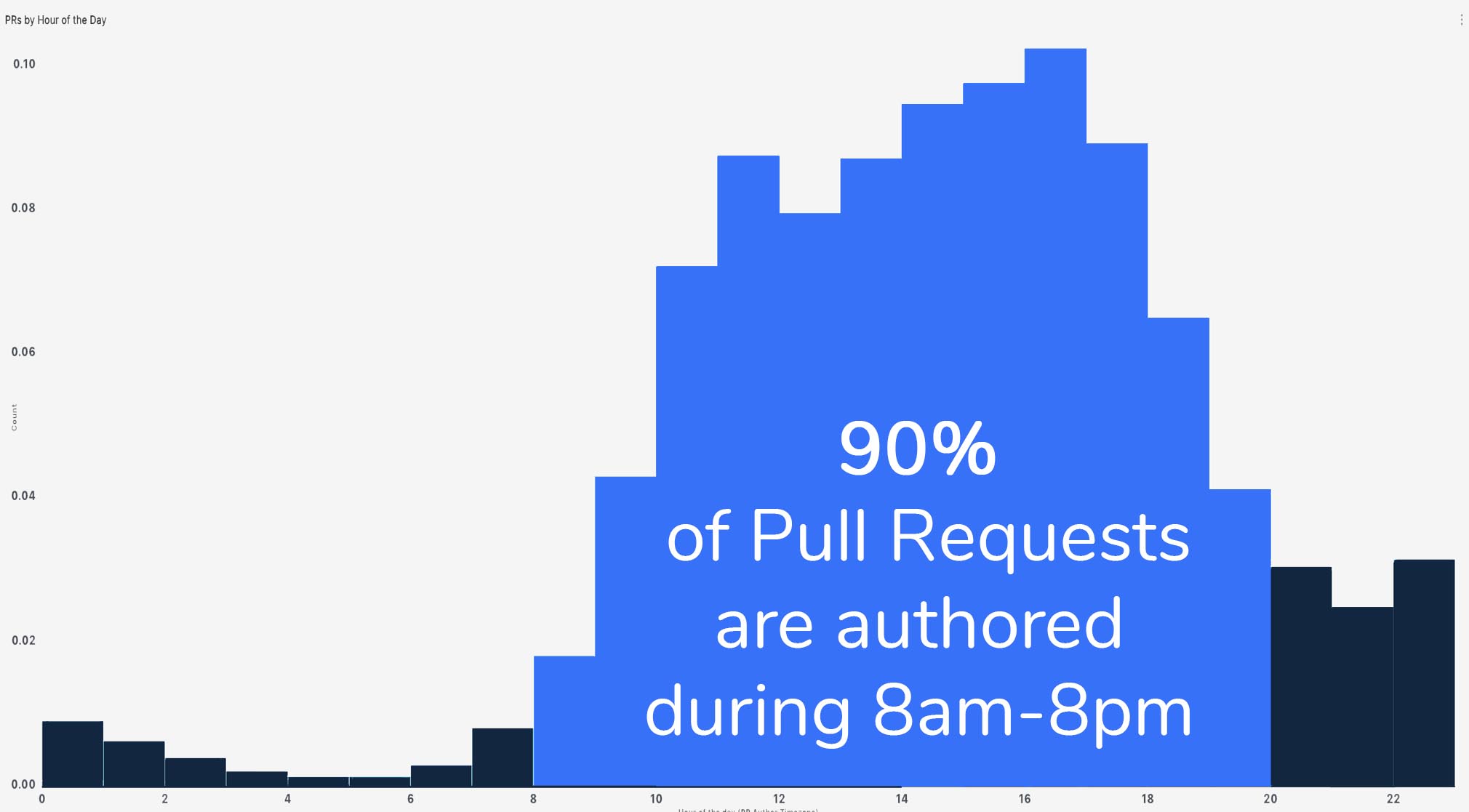With companies on lockdown, remote work is currently at the peak of its hype cycle. Leaders and managers are touting its efficiency and flexibility... The data-backed reality, however, offers a more nuanced perspective.
COVID-19 has thrust us into the middle of a massive workplace experiment. Like with any experiment, we should develop hypotheses around remote work and gather data to understand its impact.
Many companies have unwittingly incorporated common remote work assumptions that will lead them to lower productivity levels, more frequent morale issues, and higher attrition rates. From our experience improving engineering effectiveness, here's how to avoid those pitfalls.
A Tale of Two Teams
“It was the best of work, it was the worst of work; it was the age of freedom, it was the age of imposition; it was the age of being home; it was the age of never leaving work.”
Last April, two engineering teams shifted to remote work:
Team Tired kept their same organizational structure and workflow when engineers returned to their homes. On a quest for maximum flexibility, Team Tired opened up their hours so anyone could work from anywhere at any time. Now, however, projects are slowing down. Tired's engineers are complaining about early morning meetings, zoom fatigue, and burn-out. Their VP of Engineering is starting to have doubts about going remote.
Team Thoughtful took a more deliberate approach. They gradually built clusters of engineers in curated timezones, continually evaluating cross-location work to minimize scheduling snafus. They established boundaries on expected working hours, surveying their team at each step to ensure their home infrastructure, tooling, and culture were adapting well.
Team Tired followed the standard assumptions. Team Thoughtful followed the data.
The Inaccurate Assumptions Around Remote Work
The on-the-ground data shows that a whole host of assumptions about engineers are inaccurate, inefficient, and hurting engineering effectiveness. If your team is working remote during COVID-19, these data-backed answers may be the help you need.
False Assumption #1: Geographic Location Doesn't Matter
Since the internet offers light-speed communication, most managers assume communication will "just work". In actuality, clustering time zones is a key factor in improving your engineering effectiveness.
After analyzing more than 50,000 pull requests from tech companies of all shapes and sizes, we learned that timezones can have a significant impact on how long it takes for a pull request to be reviewed. Three hours is the tipping point: if your team operates with three hours or more of difference, expect their code reviews and interactions to suffer. While this result is coherent with intuition (and physics!), it remains a forgotten detail for many decision-makers.

Due to the natural back-and-forth that happens with any code review process, this difference will compound extremely quickly and drastically decrease productivity, as well as the engagement of the authors and reviewers involved.
When working with timezone troubles, also be on the lookout for minority timezones and teams with leaders at a distance. If your team has a main hub in the US with a small cluster of developers in Europe, expect these European developers to be stymied. Similarly, if an engineering lead moved to NYC during the pandemic while the rest of their team remained on the West Coast, consider making a change.
False Assumption #2: Remote Work Always Increases Employee Freedom
This mistaken assumption believes that software engineers are night owls, staying up late to work and crawling into the office around noon. Adhering to this assumption, many offices have done away with standard working hours when shifting to remote work, expecting engineers to structure their own time.

Night owl behavior is actually the exception, not the norm. The data shows that 90% of engineering activity happens during normal business hours, and it's easy to see why: even during lockdown, engineers have other obligations — family activities and personal lives — so they prefer classic hours (around 9am to 6pm).
Flexible hours can easily become an imposition. If you assume your engineers will set their own hours, employees with more seniority or status will implicitly dictate everyone else's activities.
Then, since work-from-home means your engineers are unable to leave the office (i.e. their home), they'll never receive the mental health and productivity boosts provided by relaxation and free time.
Classic business hours exist for a reason: they encode a set of expectations about the balance between work and personal life. COVID lockdowns have increased the average workday by nearly an hour, with almost 70% of employees reporting increased levels of burnout. By extending the day to additional hours, you may risk injuring your engineers' work-life balance and creating attrition down the line.
False Assumption #3: Remote Work Decreases Office Distractions
Because employees aren't in an office, many managers assume they're operating with fewer meetings, interruptions, and office distractions.
In reality, remote work creates more distractions that prevent deep work. In the weeks immediately after the first COVID lockdowns, we noticed that engineering meetings dramatically increased. Now, meetings have returned to their base level but slack interruptions are at an all-time high.
Not only have office interruptions increased; for many engineers, home life poses an entirely new set of challenges.
While a company's leadership may enjoy dedicated home offices and ample room to navigate around house partners, many engineers share their space with roommates all competing for the same limited space.
Your engineers' effectiveness requires long blocks of uninterrupted time. When forming a calendar and establishing office interaction protocols, you should be even more intentional when working remotely because engineers are working and living where their peers, partners, pets, roommates, or children also live.
How to Organize a Remote Team Effectively
With COVID-19 lockdowns still in effect, many teams will be operating remotely for the coming months. Given this improved data, how should you structure your work?
New Work, New Tactics
A distributed workforce was intentionally created to operate around the world. Its employees have developed work and life infrastructure that match the needs of long-distance communication. A temporarily remote workforce has been thrust into these activities with little-to-no training or infrastructure. This group needs new tactics and greater intention.
If your engineering team has been forced to work remotely, you should:
- Cluster teams around the same timezones. Three hours or more is the tipping point. If you can minimize intra-team communication across timezones, your engineering effectiveness will increase. If someone has to communicate at a distance, consider placing that burden on the team's manager so that the engineers themselves have more time for deep work.
- Help engineers create appropriate at-home infrastructure. If an engineer in an office needed a mouse or monitor, the company would buy them the relevant tools. If their home internet is overloaded because their roommate is also on a zoom call, consider similarly shifting your schedule to fit their constraints. For engineers who lack the office infrastructure, consider reorganizing or paying to help them — be it through schedules, desks, or even upgrading their internet.
- Ask employees what issues are arising. Some employees will have trouble concentrating after their kids return from school. Others may have an exercise class that only meets at a specific time. We're all forced to adjust to our current work environment and challenges are personal, so seek them specifically through surveys and by performing root-cause analysis on blockers.
Prevent Remote Work from Creating Power Imbalances
If your team doesn't operate on clear expectations, people with higher status and more power will influence others — even subconsciously — to match their schedules and constraints. Standard office culture has built up protections over decades, only for many of these to disappear along with COVID-19.
Pre-COVID, a manager may have felt perfectly reasonable slacking an employee at 9pm and assuming the employee will respond in the morning. Now, the lines are much more blurred: if your team lives in the same place where they work, they may feel obligated to respond right away.
To avoid the power imbalances that always-on offices can establish:
- Create clear expectations. If your team has shifted location, the standard 9am-6pm structure may require slight alterations to fit their new needs. "Always on", however, or "whenever their manager works" will lead to feelings of powerlessness and the exhaustion that overwork creates. Instead, set clear expectations with your team on when they should be online/responsive and when they have flexibility/unstructured time.
- Avoid interruption creep. Just as a client or customer may ask for increasing amounts of work ("scope creep"), so too may a manager rely on frequent interruptions or status-gathering communication to stay in touch with their team ("interruption creep"). When creating a healthy culture, a manager's job is to enable high-quality work, which includes protecting your engineers from team activities that don't suit them. Your managers may not even know they're shifting team activities to align with their preferences, which makes regulating these elements increasingly important.
Most Importantly: Run A Proper Experiment
Operational improvements — like scientific experiments — shouldn't operate on guesses and hope. In our current mass experiment of remote work, we should form hypotheses, act deliberately, and measure results.
At a minimum, you should survey engineers to monitor their blockers, zoom fatigue, and interruption issues. More sophisticated tools can understand these aspects' in-depth impact on your productivity, catching the unseen blockers and pain points that remote work has brought. Then, based on that data, you can implement changes and measure the results.
Like with any experiment, you'll have to iterate. In the emerging area of remote work, you're unlikely to create the perfect solution out of the gate. Measure your current level of engineering effectiveness, form hypotheses on how to advance, then implement adjustments and re-assess the effects.
When running your engineering effectiveness experiments, be sure to follow every step of the scientific process: if you don't measure the data before and after, for instance, you'll simply suffer from confirmation bias.
Moving Forward
If you operate in a remote work setup without intentional and deliberate choices, you'll implicitly shift the costs of remote work onto your engineers, decreasing their effectiveness and costing your culture.
The investment on remote work that you make now will pay dividends far into the future. Not only are remote offices the current standard; after COVID-19, expect most offices to operate on a hybrid model. If you respond effectively to this current situation, you'll be poised to enable your top talent to thrive.
Could your engineering team benefit from increased effectiveness? We'd love to help: try Okay.
